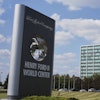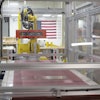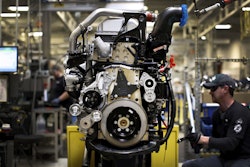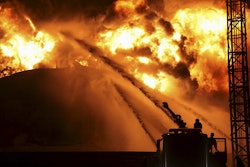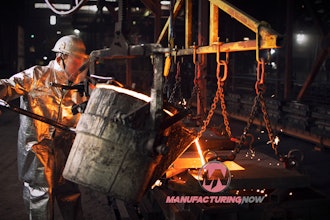This article originally appeared in Food Manufacturing's March/April 2015 print issue.
Food Manufacturing spoke with Terry Smith, Executive Vice President of Operations at Jack Link's Beef Jerky, and Kip Dowding, Manager at A.T. Kearney's Strategic Operations Practice, to discuss trends and topics related to plant safety and security in the food manufacturing industry.
Q. What are some of the top plant safety and security measures every food company should have in place?
A. Smith: Some of the top safety priorities at Jack Link’s focus around ensuring the safety of our team members, customers and partners. In order to achieve a world-class, safe culture, all team members must be responsible for, and involved in practicing safety on a daily basis. This is being achieved at Jack Link’s by eliminating hazards in the workplace, teaching team members to practice safe behaviors, observing and coaching them and providing feedback and suggestions for program improvements.
Dowding: Leading food and beverage manufacturers have evolved beyond incident rate metrics to comprehensive internal auditing to assess all aspects of their safety and security program. An auditing assessment program should be a part of a food company’s continuous improvement plan to identify and improve lagging aspects the comprehensive plant safety and security program.
Q. What challenges do food manufacturers face in regards to plant safety and security?
A. Smith: Effective communication and employee engagement can pose a challenge to companies in the U.S. that have a dynamic workforce, made up of many languages and cultures. At Jack Link’s, we make sure all team members understand policies, procedures, and are able to communicate effectively with their supervisors and managers. All of these factors are key to overall safety, quality and productivity.
Dowding: (The) largest challenge and concern of food manufacturers when it comes to plant safety and security is employees bringing personal issues into the workplace. It is difficult to anticipate and mitigate when an employee’s personal situation could manifest itself it the workplace that compromises the safe and secure environment, as well as food safety.
Q. What are some emerging trends and solutions when it comes to plant safety and security?
A. Smith: Many companies work diligently to improve the learning and training experience for new and existing team members through interactive, scenario-based learning activities. Whether this occurs through traditional classroom learning or hands-on learning, building the quality of the educational experience through seeing, hearing and practicing is something many companies use as a tool to improve plant safety and security.
Dowding: As companies become more global, central-led safety and security programs are being developed. The challenging aspect is to have global standardized systems in place. Local social and political environments certainly influence the type of security required. Where simple perimeter fencing is sufficient in one environment another environment may require fully armed security guards.
Q. How can workplace safety and security impact food safety?
A. Smith: There are many workplace-related circumstances that could impact food safety such as fires, evacuations and medical or first-aid incidents that could lead to potential equipment or food contamination. Teaching team members about potential security risks and having stringent access points to various areas in the facility in the event of an occurrence can help eliminate this risk. Additionally, the more committed management and leadership teams are at each facility in addressing workplace safety, the more knowledgeable our team members will be with all of the processes in our production lines.
Dowding: Every point along the food manufacturing value chain is a risk point for food safety. As the workplace becomes safe and secure, a variable that could impact food safety is reduced. Therefore, continuous and keen focus on workplace safety and security is critical, not just from an employee safety perspective but also from a consumer perspective.
Q. What specific impact or influence has technology had on plant safety and security in recent years?
A. Smith: Technology plays an enormous role in plant safety and security by increasing the amount of tools that are at our disposal to continuously improve. These tools have come in the form of safety and risk management information systems, tablet-based safe behavior observation platforms, mobile applications with site specific emergency information and interactive group training systems. All of these factors assist in improving productivity and offer advanced training to remove hazards and prevent injuries or incidents from occurring.
Dowding: Certainly more capable technology enables better monitoring, detection and notification. However, employee training on safety and security policies and procedures are critical. The workplace must embody a safety and security culture. It is every employee’s responsibility to be aware and on alert for potential safety and security violations and know how to react when a violation is witnessed.
Q. In what ways has the Food Safety Modernization Act impacted plant safety and security?
A. Smith: FSMA has brought attention to addressing and assessing risks. The scope of potential risks has been expanded beyond just risks in processing.
Dowding: The Food Safety Modernization Act has been a positive driver of increased focus on plant safety and security since its signing into law January, 2011. When safety and security laws are established along with guidelines and strategies for implementation, everyone wins. The downside is the added costs/resources required to implement and ensure compliance.
